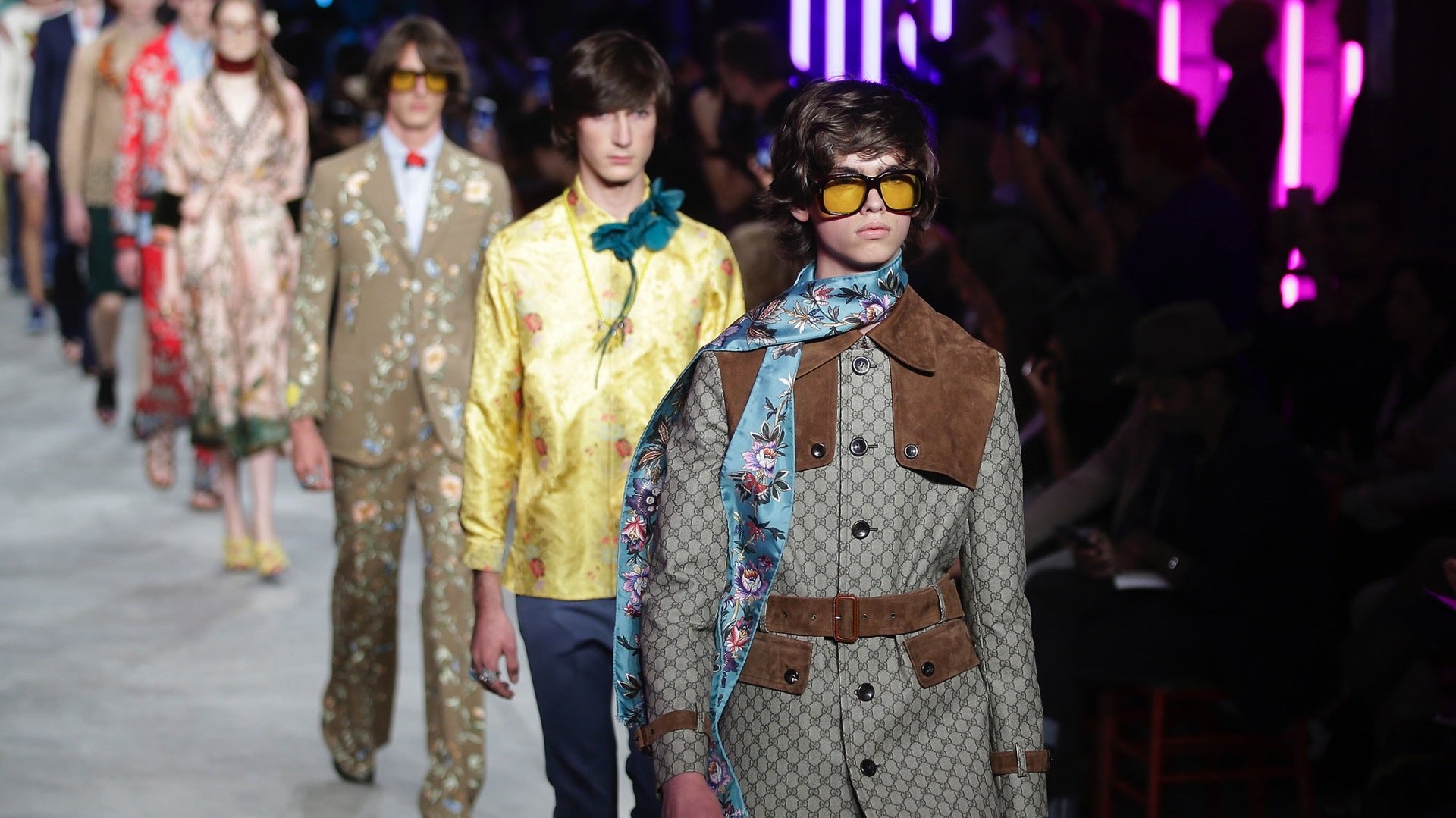Retailers should ditch “men’s” and “women’s” departments and embrace genderless fashion
Gendered fashion is on the way out. Fashion designers are mixing menswear and womenswear on the runway. Parents are pushing for genderless clothing that allows little girls to, say, wear science-themed t-shirts instead of princess dresses. And Quartz fashion writers are asking: ”Sex and gender aren’t perfectly binary. Why should clothes be?”


Gendered fashion is on the way out. Fashion designers are mixing menswear and womenswear on the runway. Parents are pushing for genderless clothing that allows little girls to, say, wear science-themed t-shirts instead of princess dresses. And Quartz fashion writers are asking: ”Sex and gender aren’t perfectly binary. Why should clothes be?”
To be sure, retailers like Gap, the North Face, and American Apparel have sold unisex clothing for years, though sizing is still typically cut across gender lines.
But moving toward a less gendered retail experience could also be a “business opportunity for retailers who create a comfort zone for people who don’t want to subscribe to one category,” writes market researcher NPD Group in a new e-book (pdf).
NPD argues that retailers could benefit from moving past the old-fashioned store layouts once designed to comply with increasingly outdated notions of gender roles (although it falls short of providing conclusive proof that consumers would actually buy more if stores dissolved the gender division).
Still, the argument makes sense. If men and women are going to wear the same pair of Converse or Vans sneakers, why stock them in separate “his” and “hers” sections of the store? If a woman shopping in a department store prefers the clothes in the traditional men’s section, does she have to lug them down to another floor just to try them on? Should a retailer give up on potential sales by alienating a woman who doesn’t want to shop in the men’s department?
Some retailers are already moving in that direction. While Personnel of New York maintains “women” and “men” sections on its website, it also has a tab featuring genderless clothing and accessories called, simply, “Everyone.”
Just this week, Target announced that it was phasing out gender-based signage after customers complained that marketing products by gender was regressive and unnecessary. Target said it would remove signs in the home goods and entertainment aisles that delineate which products were meant for boys or girls, as well as the use of pink, blue, yellow, or green paper on its shelves in the toy aisles.
British department store Selfridges recently did away with gender-based shopping in a concept store called Agender, which aims to “transcend the notions of ‘his’ and ‘hers,'” according to its website, with genderless clothes from more than 40 designers. So far, business has been good enough that Selfridges is considering creating a stand-alone store, reports Details.
The store’s experiment hints that the appeal isn’t limited to women who want to escape the stylistic confines of conventional femininity.
“In fashion, more and more we are seeing physically masculine men wearing what might traditionally be thought of as feminine,” Linda Hewson, Selfridges’ creative director, tells Details. “Function and individuality are now more important than a uniform idea of what’s conventionally appropriate.”